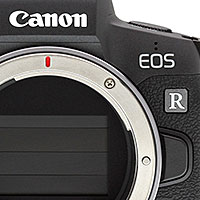Here is an article including a (simplified) image of a DPAF pixel with microlens:I'm still trying to understand this: So, you're saying you have a horizontal row of 50 pixels, each pixel with 2 sub pixels. One sub pixel is sensitive to the rays from the left of the main lens, and the other sub pixel sensitive to the right of the main lens. I'm wondering what type of micro lens above each of these 2 sub pixels can be so selective? Wouldn't each of the micro lenses have to reject half (at least) of the light, and how would they make such an optical structure that would be so completely effective in the splitting when they sub pixels are both next to each other in the sensor? I think the physical construction of the two sub pixel micro lenses and how they split the sensation of light from the left & right side of the main lens is the crux of what I need in order to really understand it.
I also assume that you could shift your computational logic by 1 (or more) whole pixel to the left or right to have another 50 pixels (25 to the left, and to the right) to give you a new AF value, correct? That is, the 2 sub pixels of a single pixel could be used by up to 50 different sets of AF logic if they wanted to design that many AF points, correct?

Canon EOS R: A deep-dive Q&A session with the Canon engineers - Imaging Resource
Canon's new EOS R full-frame mirrorless camera has stirred a lot of buzz, and I'm sure readers will have as many questions as we've had about it. I had a chance to sit down with a panel of top Canon engineers at the…
There is actually one lens on each dual-pixel, and it does not reject light (which would reduce sensor sensitivity) but rather directs the light to the appropriate sub-pixel.
Yes, you could move your 50-pixel AF 'sensor' by only one pixel, however, in this case the result would be almost the same, because 49 pixels are the same. So I assume that there is a sensible amount of pixels between AF positions (maybe at least half the length?), and I assume this is why the number of AF points is significantly lower than the number of horizontal sensor pixels. You could also vary the length of the sensor which would have an impact on the selectivity of the AF point and on the probability of finding a target.
Upvote
0
